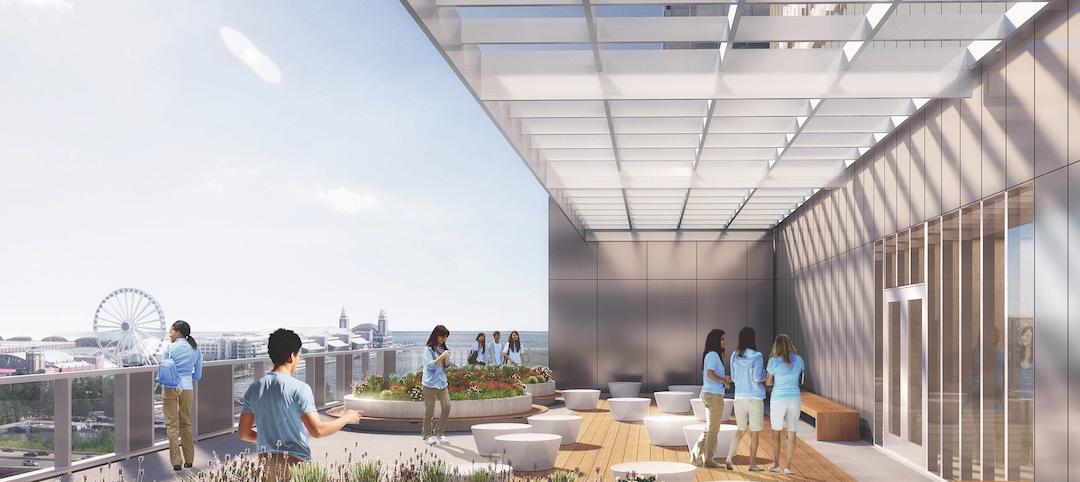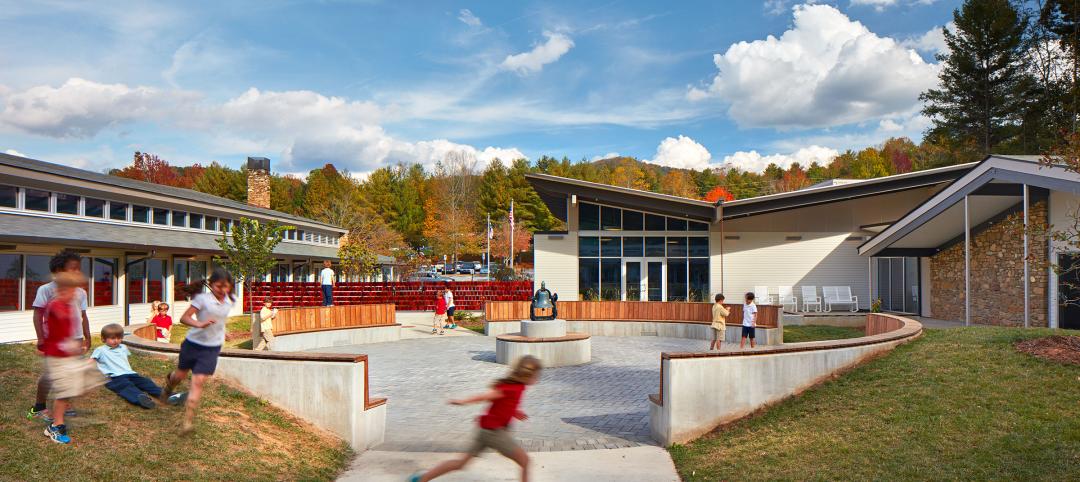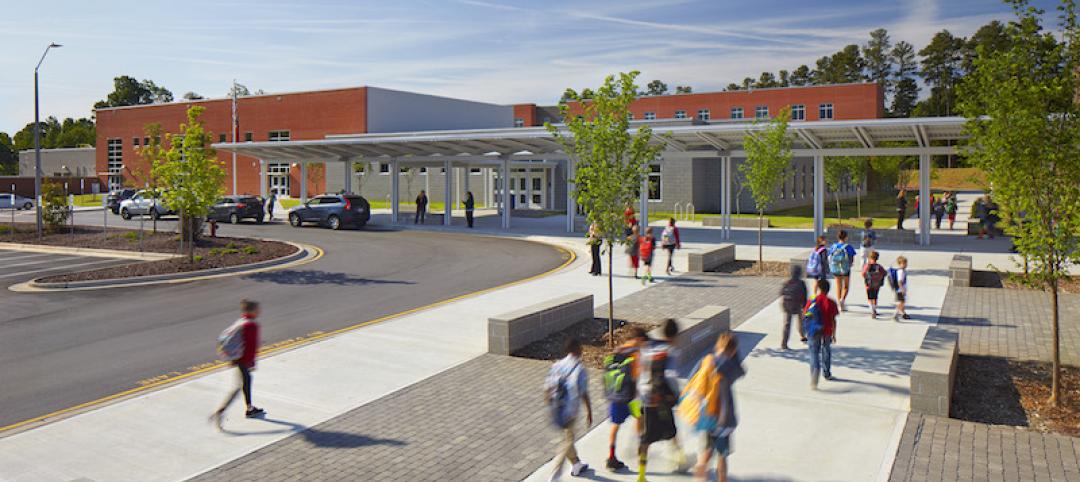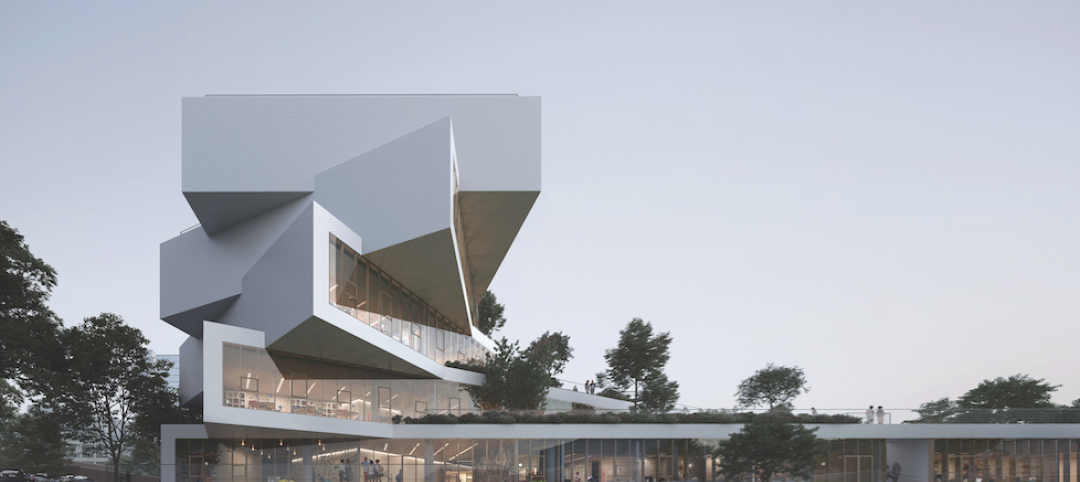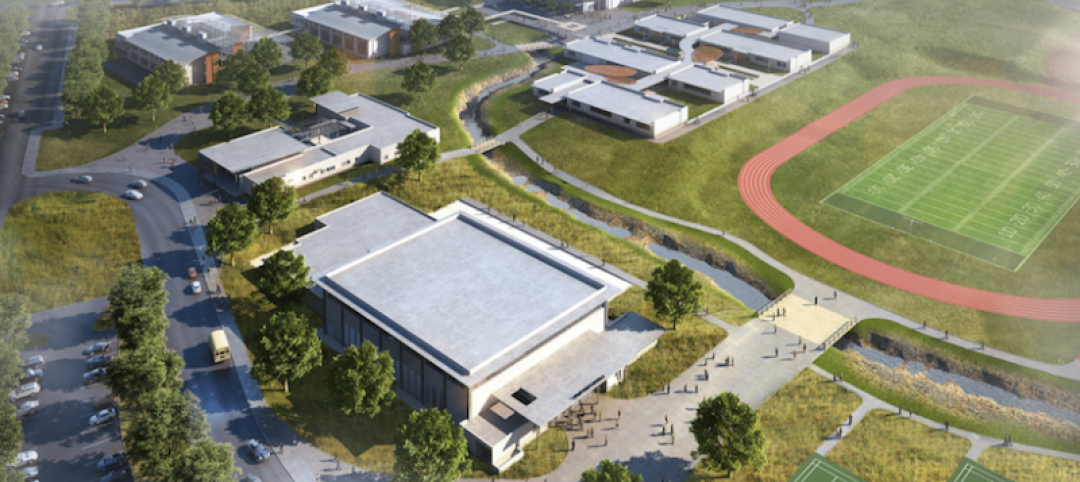One of the more compelling arguments for charter schools is their theoretical ability to streamline decision making. Eliminate all those layers of bureaucratic fat that clog the arteries of most public school systems, the argument goes, and decisions can be made to flow much more smoothly, even when it comes to designing and building a major school project.
That's the theory, but when the charge is to design and build a new charter high school in just over three months, it takes more than fast-tracking to make the project succeed.
Five years ago, teachers, parents, local business owners, high-tech advocates, and entrepreneurs in Anchorage, Alaska, came together to discuss creating a charter school as an alternative for middle and high school students. They envisioned a small school with a low student-teacher ratio that taught a technology-rich curriculum, problem solving, and team-building skills through project-based education.
Their efforts paid off when the Anchorage School District chartered an innovative, tuition-free secondary school in late spring 2003 to serve a maximum of 450 7th–12th graders. The new facility, named Highland Technical High School, was to be built in time for occupancy in August.
The timing couldn't have been better for local developer J. L. Properties The developer had recently purchased the Boniface Mall of East Anchorage, which included an abandoned Safeway supermarket.
Seizing the opportunity, J.L. Properties and Anchorage school officials engaged a design-build team consisting of local general contractor Davis Constructors & Engineers, local architect RIM Architects, and its sister firm RIM Design. The lease was signed in April 2003, leaving just 14 weeks to completely renovate the 30,000-sf supermarket.
Meeting a pencil-thin budget
The Building Team quickly learned that the school founders wanted a design that supported the innovative educational model proposed in the charter, but were somewhat vague on what that meant.
"When we first met with them, they had no idea what the program was going to be," says Rolland Reed, principal in charge at RIM Architects. "We really had to work with them on a fast-track basis to turn it into design and then reality." Added to that was the challenge of turning a drab, empty building into a modern, stimulating environment on a budget of roughly $60 a square foot.
The solution was to model the overall design concept after the unique aspects of the school's program. To meet a tight budget and schedule and still design an open, interactive facility, basic cost-effective construction materials were used to define free-flowing partitions with portions of the metal stud framing exposed. "With so little money and time, exposing the building structure, the metal studs, and the centrally located computer wires all worked," says Reed.
"If we had gone through the normal design-by-committee process of a school district, we could have never had it done [in time], so it certainly was a help that it was a charter school," says Sheila Shanks, interiors principal in charge, RIM Design. "We also had a lot of recent design-build projects with the developer and this contractor, so we were able to move quickly to accommodate the schedule."
Demolition began on May 4, 2003, with the removal of the cashier line, shelving units, freezers, and mechanical/electrical mezzanine.
Structurally, Davis limited its work to adding brackets to seismically reinforce the roof-to-tilt-up concrete wall connection. "It would hold snow all day long, but as far as today's seismic codes, it wasn't up to snuff," says John Pepperd, Davis project manager.
Interior walls were treated more like visual screens than as structural elements. They were punctuated with clear openings and translucent polycarbonate panels which assist in connecting interior rooms. Some partitions have been left unfinished and open at the ceiling in order to temper the large volume of the existing space and to avoid compartmentalization of rooms.
All electrical and HVAC utilities were left exposed. Producing an open ceiling system of cable trays and heating ducts contrasted by the wood ceiling gave the school a contemporary feeling and kept construction costs low.
RIM included a new energy-efficient lighting system of high-output fluorescent and high-bay HID fixtures. Heating and cooling was addressed with a new boiler with baseboard and a roof-mounted heating package unit. Because the facility would be used primarily during the shoulder seasons and not in summer, ceiling fans were substituted for a more expensive vent system to keep heat circulated, says Reed.
Material procurement management was also a key concern for general contractor Davis had to monitor to keep the project on schedule. "Up here in Alaska, everything has to be shipped," says Pepperd. "If the designers pick a tile that's not available in Seattle or Portland or somewhere on the West Coast, it's pretty much a show-stopper," because the tile would never get to there on time.
High-tech learning environment
The space was ready for full occupancy and furniture installation in August 2003, a little more than three months after the lease was signed.
The program for the school is based on a comprehensive digital learning environment that integrates technology, connectivity, and digital content into the classroom. There is a computer workroom with 150 stations and seven seminar rooms. "The school is real technology driven, and they learn everything on computers, from biology to history," says project designer Megan Taushek of RIM Interiors. "When they dissect a frog, they don't actually have a frog in front of them." The focus is on project-based work.
The school has six tech labs: a project lab, an intelligent systems lab, a pre-engineering lab, a communications lab, an information technology lab, and an environmental lab. All rooms are wired for audio-visual projection units, and the tech labs are equipped for various types of technology, including environment lab studies, robotics, and even flight simulation. Highland Tech also supports a wireless environment for laptops and hand-held devices.
The curriculum includes numeric literacy; oral and written communication literacy; reading and literature; technological literacy; science and global environments; social environments; personal, social, and service skills; and career and content literacy. Students must demonstrate what they know through presentations, simulations, and real-life applications.
In at least one respect, getting the high-tech effect led to problems. High ceilings, walls that end four feet lower than the ceiling, curved walls, and the lack of doors made the interior pretty noisy. "It's one of the first questions we raised," adds Reed. "We asked if it would be a problem, but they said they wanted that 'live' kind of environment. Now they're finding it's acoustically a little too live, and they're adding some acoustical panels on the ceiling to further dampen the sound."
Overall, the Building Team remains confident that they met not only the logistical and budgetary demands of the school board, but also the educational needs of the students.
"Right away, we heard very positive response from the students," says Reed. "Kids can immediately relate to it, it's very complementary to the program, it's high tech, it's unusual, and it's cool."
He adds: "One thing we learned from this project is that this type of open planning with basic materials is very good for a program that's still not yet defined. There's no backtracking, and no losing your investment."
Related Stories
Building Tech | Jun 26, 2019
Modular construction can deliver projects 50% faster
Modular construction can deliver projects 20% to 50% faster than traditional methods and drastically reshape how buildings are delivered, according to a new report from McKinsey & Co.
K-12 Schools | May 17, 2019
Tall schools, tight spaces: Giving students access to the outdoors requires considerable creativity
Verticality has some plusses, according to AEC firms that have engaged such projects recently.
K-12 Schools | Apr 25, 2019
How outdoor environments provide value to K-12 learning, health, and safety
Outdoor spaces at school offer students key opportunities to learn, problem solve, and mentally refresh.
K-12 Schools | Jan 21, 2019
Safer K-12 design: School should feel – and look – like school
In an age during which stories of bullying, school shootings, and mental health concerns are all too common, designers have a critical role to play in crafting K-12 schools that simultaneously promote engaged learning and student safety.
K-12 Schools | Nov 5, 2018
Modernizing schools is paying off in creating better learning and teaching environments
A new paper reports on a recent study of nine schools in Washington DC that gauged occupants’ perceptions.
K-12 Schools | Jul 26, 2018
K-12 market trends 2018: Common areas enable hands-on learning
Modern designs emphasize social and collaboration spaces outside the classroom.
| May 30, 2018
Accelerate Live! talk: From micro schools to tiny houses: What’s driving the downsizing economy?
In this 15-minute talk at BD+C’s Accelerate Live! conference (May 10, 2018, Chicago), micro-buildings design expert Aeron Hodges, AIA, explores the key drivers of the micro-buildings movement, and how the trend is spreading into a wide variety of building typologies.
| May 24, 2018
Accelerate Live! talk: Security and the built environment: Insights from an embassy designer
In this 15-minute talk at BD+C’s Accelerate Live! conference (May 10, 2018, Chicago), embassy designer Tom Jacobs explores ways that provide the needed protection while keeping intact the representational and inspirational qualities of a design.
K-12 Schools | Jan 25, 2018
Cost estimating for K-12 school projects: An invaluable tool for budget management
Clients want to be able to track costs at every stage of a project, and cost estimates (current and life cycle) are valuable planning and design tools, writes LS3P's Ginny Magrath, AIA.
K-12 Schools | Jan 24, 2018
Hawaii’s first net-zero public school
G70 is the architect, planner, and civil engineer of record for the project.



